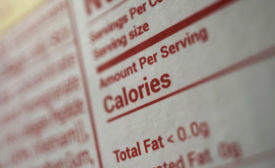ARTICLES
Ice cream is the only food intended to consumed frozen.
Read More
The difference between innovation and invention
Dairy processors are often counted upon to invent things that do not currently exist.
September 24, 2024
Every ice cream type and style in existence
No matter the “style,” ice cream is the only food designed, formulated, manufactured, marketed and sold with the express intent of being consumed frozen.
May 22, 2024
Labeling: Rationalizing (negotiating) mix compositions, market positioning and more
Nutrient content/declarations, compositional and other finished goods objectives also discussed.
April 19, 2024
How to manage economics with frozen desserts
Ice Cream industry advised to take a step back into the what, why’s, and how’s of achieving ongoing cost control and management.
February 19, 2024
The definition of water ices and sorbets are not so simple
Taking a closer look at the differences in these products.
September 18, 2023
What to consider when raising frozen ice cream temperatures
Melt behavior is a huge factor dairy processors must consider.
May 12, 2023
A guide to differentiating and comparing mixes for frozen desserts
Everything to know about Water Control Index, Fat Agglomeration Index and more
April 14, 2023
All the skinny on milkfat
As an ingredient in frozen desserts, it is critical when delivering sensory appeal and resistance to heat shock.
February 22, 2023
Fruit and fruit preparations for frozen desserts
Execution can become critical to the success of any brand
September 20, 2022
Stay ahead of the curve. Unlock a dose of cutting-edge insights.
Receive our premium content directly to your inbox.
SIGN-UP TODAYCopyright ©2025. All Rights Reserved BNP Media.
Design, CMS, Hosting & Web Development :: ePublishing









.jpg?height=168&t=1679408908&width=275)